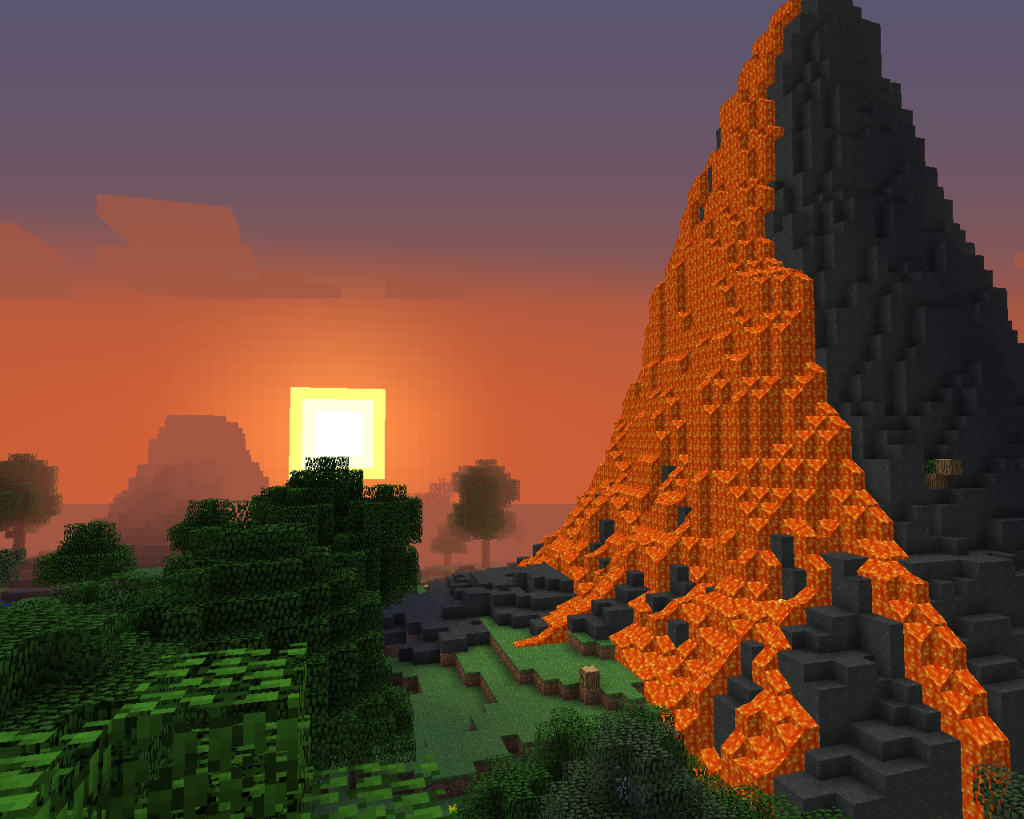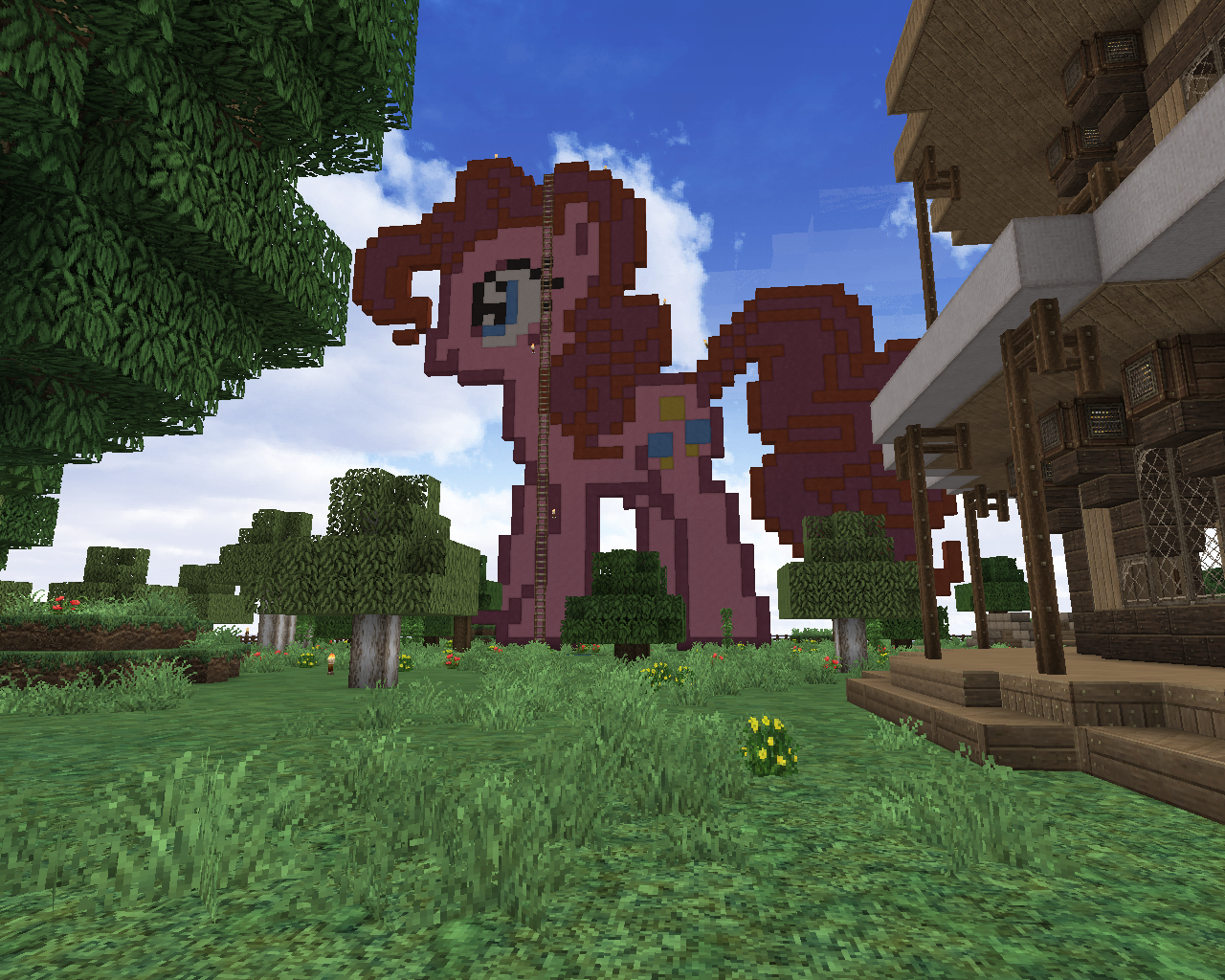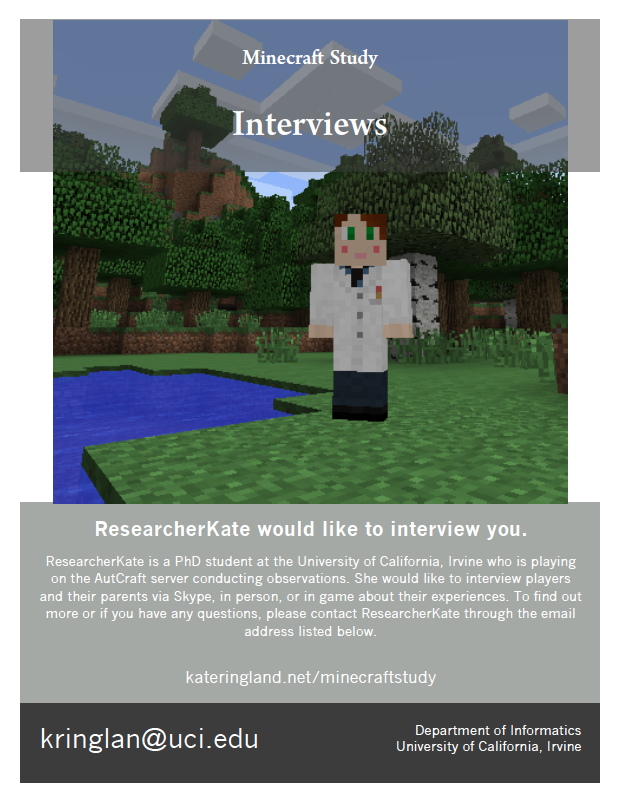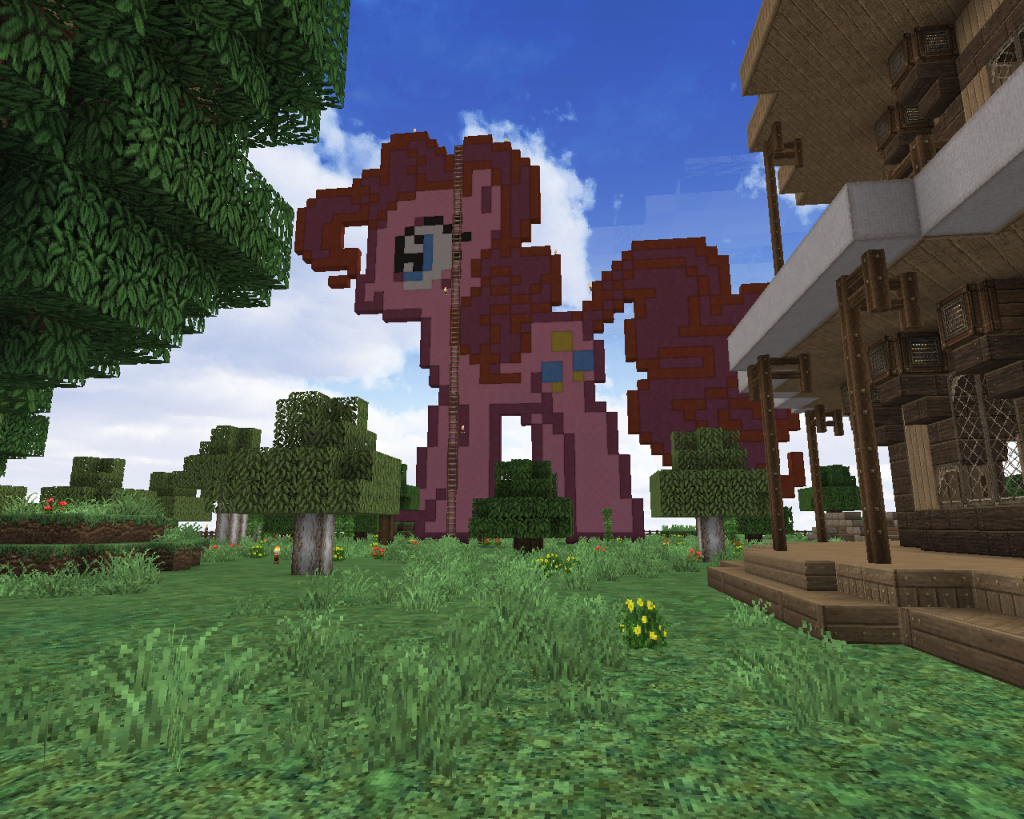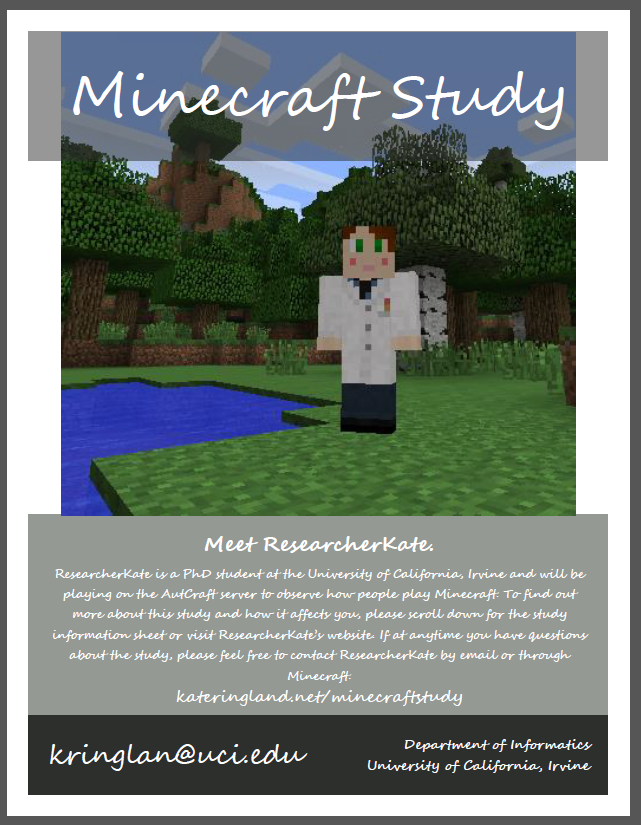Social media, including virtual worlds, has the potential to support children with autism in making friendships, learning pro-social behavior, and engaging in collaborative play with their peers. However, currently, little is known about how children with autism interact socially in online spaces. Furthermore, there is much more to learn about how technology can support these collaborative interactions. In this study, I propose investigating how a virtual world can be intentionally run alongside other complementary social media (e.g., website, forum, Facebook, Twitter, and Google+) specifically for children with autism. The contribution of this work is to create design guidelines for creating social media systems (including virtual worlds) to support social interactions of children with autism.
Current Publications:
Kathryn E. Ringland. 2019. “Do you work for Aperture Science?”: Researching and Finding the Gamer Identity in a Minecraft Community for Autistic Children. In FDG 2019. [PDF] [BLOG]
Kathryn E. Ringland. 2019. A Place to Play: The (Dis)Abled Embodied Experience for Autistic Children in Online Spaces. In CHI 2019. [PDF] [BLOG]
Kathryn E. Ringland. 2019. “Autsome”: Fostering an Autistic Identity in an Online Minecraft Community for Youth with Autism. In iConference 2019 Proceedings. [PDF] [BLOG]
Kathryn E. Ringland, LouAnne Boyd, Heather Faucett, Amanda L.L. Cullen, Gillian R. Hayes. Making in Minecraft: A Means of Self-Expression for Youth with Autism. In IDC 2017. [PDF] [BLOG]
Kathryn E. Ringland, Christine T. Wolf, LouAnne E. Boyd, Mark Baldwin, and Gillian R. Hayes. 2016. Would You Be Mine: Appropriating Minecraft as an Assistive Technology for Youth with Autism. In ASSETS 2016. [Acceptance Rate: 25%]. Best Paper. [PDF][BLOG]
Ringland, K. E., Wolf, C. T., Faucett, H., Dombrowski, L., & Hayes, G. R. (2016). “‘Will I always be not social?’: Re-Conceptualizing Sociality in the Context of a Minecraft Community for Autism”. In Proceedings of ACM CHI Conference on Human Factors in Computing Systems 2016. [Acceptance Rate: 23.4%]. [PDF][BLOG]
Ringland, K.E., Wolf, C.T., Dombrowski, L., and Hayes, G.R. “Making ‘Safe’: Community-Centered Practices in a Virtual World Dedicated to Children with Autism”. Proceedings of the 2015 ACM International Conference on Computer Supported Collaborative Work, ACM (2015). [Acceptance Rate: 28.3%]. [PDF][BLOG]
Ringland, K.E., Wolf, C.T., Hayes, G.R. (2015, May 15). “The Benefits of Online Play: An Investigation of Virtual Worlds for Children with Autism Spectrum Disorder”. International Meeting for Autism Research Salt Lake City, Utah.
Ringland, K.E., Hayes, G.R. (2014, April 27). “Virtual Worlds: An Alternative Method for Communication for Children with Autism Spectrum Disorder”. Workshop: Supporting Children with Complex Communication Needs. ACM SIGCHI Conference on Human Factors in Computing Systems. Toronto, Canada. [PDF]
Last Updated: September 16, 2019
Related Posts:
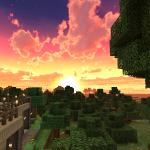
A Place to Play

“Autsome”: Fostering an Autistic Identity in an Online Minecraft Community for Youth with Autism

